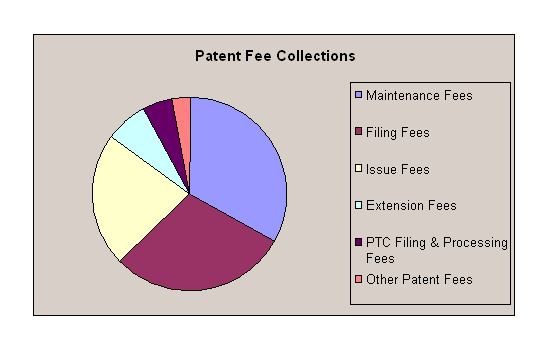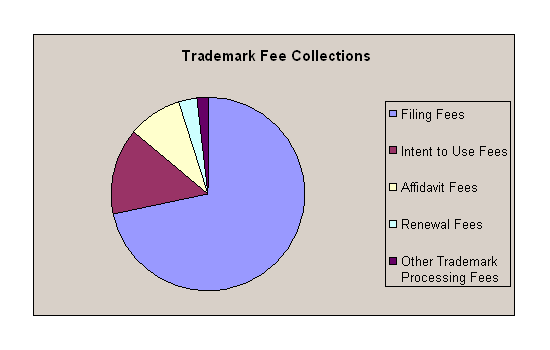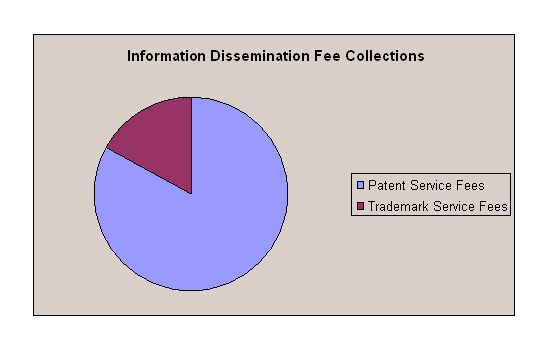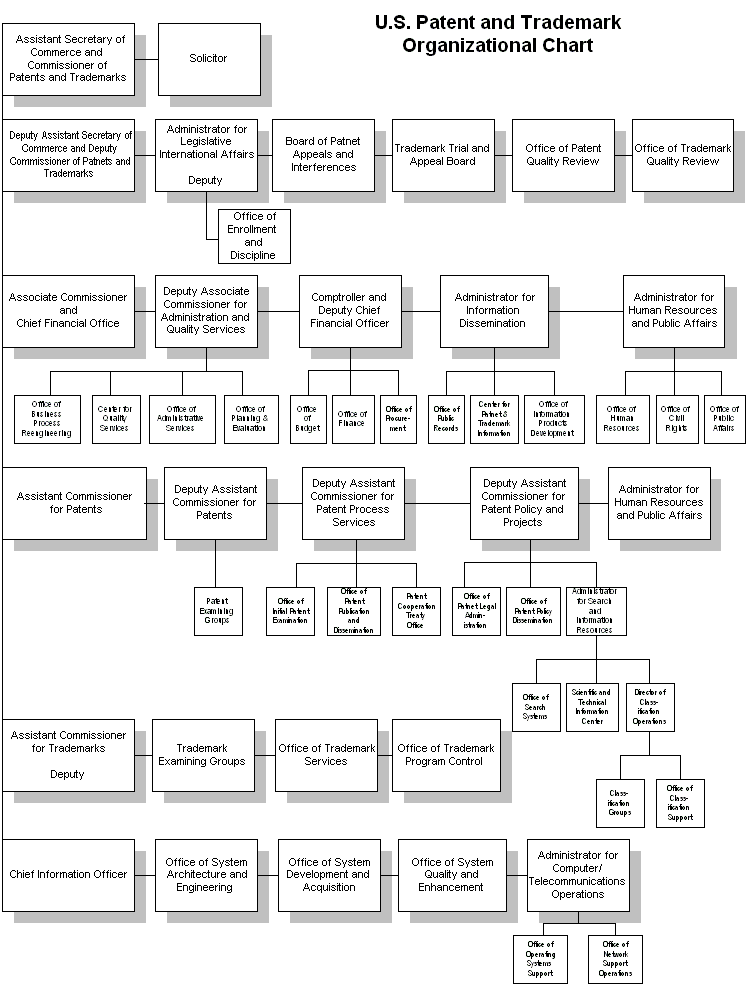Innovators and Innovations
Independent Inventors Conference - Over 200 inventors and aspiring inventors attended the 3rd Annual Independent Inventors Conference in San Francisco, California, on October 23-24, 1998. Presentations varied from basic information on the basics of PTO operations, filing requirements, provisional applications, and general tips and advice, to advanced presentations on re-examination, reissue, the Patent Cooperation Treaty, and computer/biotech related inventions. The conference also featured a panel discussion with successful inventors on their success stories. The event was co-sponsored with the Patent and Trademark Office Society. The next Independent Inventors Conference will be held in Houston on September 24-25, 1999.
The Ronald H. Brown American Innovator Award - The Ronald H. Brown American Innovator Award was established to recognize the vital role inventors play in America. This year's recipients were: Douglas Engelbart, inventor of the X-Y Position Indicator for a Display System, better known as the Mouse; James L. Fergason, inventor of Display Devices Utilizing Liquid Crystal Light Modulation, commonly known as liquid crystal display; and Kary Banks Mullis, inventor of PCR, the polymerase chain reaction method which allows scientists to identify a fragment of DNA genetic code and then reproduce it infinitely.
The Patent and Trademark Museum - During FY 1998, the museum installed two new exhibits. They were: "The Art of Photography: A Moment in Time" and "The House That Innovation Built." "The Art of Photography: A Moment in Time" featured photographs, camera equipment, and related inventions and "The House That Innovation Built" featured objects, photographs, artifacts, and products that consumers use every day.
Inventors Expo - The 1998 National Inventors Expo was held at Disney World's Epcot Center in Orlando, Florida. Nearly 60 inventors with non-assigned patents from around the country exhibited their inventions to thousands of Disney guests. The event was co-sponsored by the Intellectual Property Owners Association.
[ USPTO Organizational Chart in Adobe PDF file ]
1998 Fee Collections by Category, Cash Basis
Patent and Trademark Office
1998 Fee Collection by Category (cash basis)
Patent Fee Collections
Trademark Fee Collections
Information Dissemination Fee Collections
Total Fee Collections



Government Performance and Results Act (GPRA)
The PTO continues to move forward with implementation of GPRA, the primary legislative framework through which Federal agencies will be required to establish strategic goals, measure their performance, and report on how well they have met their goals.
The PTO has developed a strong performance measurement system that supports our mission and strategy, enhances our focus on our customers, and provides the measures we need to help us continuously improve our products and services. The tables included on the pages that follow summarize the PTO's GPRA performance goals, measures, and indicators for each of its three major business areas as well as for the executive, or policy, area.
Patent Business
The Patent business established the following measures to track progress toward achieving our performance goal. We aim, through these performance improvements, to provide our patent customers with the highest level of quality and services.
| Performance Goal : Grant exclusive rights, for limited times, to inventors for their discoveries. | Baseline | FY 1998 Target | FY 1998 Actual | FY 1999 Target | FY 2000 Target
|
|---|---|---|---|---|---|
| Effectiveness Measures | |||||
| *Number of original inventions* filed | 158,427 | 196,000 | 201,777 | 218,000 | 233,000 |
| *Number of UPR applications filed | 119,116 | 236,000 | 240,090 | 259,000 | 277,000 |
| Customer Satisfaction Measure | |||||
| *Overall percentage of customer satisfaction | 50% | 57% | 52% | 65% | 70% |
| Employee Satisfaction Measure | |||||
| *Overall percentage of satisfaction from culture survey | 41% | 65% | NA | --- | 75% |
| Productivity Measure | |||||
| *Number of weighted applications disposed (per examiner FTE) | 87.2 | 87.2 | 89.4 | 89.4 | 91.6 |
| Efficiency Measure | |||||
| *Workload cost indicator-unit cost of weighted applications disposed | $2,497.58 | $2,525.00 | $2,379.44 | $2,496.03 | $2,646.99 |
| Quantity Measures | |||||
| *Number of total applications (UPR) disposed per year (includes SIRs) | 180,196 | 195,000 | 203,227 | 221,000 | 234,000 |
| *Number of UPR patents issued per year | 105,529 | 144,000 | 140,574 | 183,000 | 155,000
|
| Quality of Output Measures-Quality of the Process | |||||
| *Cycle time of original inventions* processed (average months) | 14.6 | 16.7 | 16.9 | 10.9 | 10.2 |
| *Percentage of original inventions* achieving 12-month of less cycle time | 47% | 33% | 32% | 75% | 80% |
*Original inventions exclude Rule 60 and 62 continuations and requests for continuing prosecution under Rule 129.
- Survey not performed in this year.
NA Survey results were not available at publication time.
Trademark Business
The Trademark business established the following performance measures to assess its progress in achieving its goals. Where results do not appear to influence the PTO or Trademark Business Area goals directly, the measures will be redefined to match business goals and objectives more closely.
| Performance Goal : Enhance trademark protection. | Baseline | FY 1998 Targets | FY 1998 Actual | FY 1999 Targets | FY 2000 Targets |
|---|---|---|---|---|---|
| Effectiveness Measures | |||||
| *Trademark Applications Filed-classes | 200,640 | 240,000 | 232,384 | 256,000 | 282,000 |
| Productivity Measures | |||||
| *Disposals per FTE (including contractors) | 221 | 254 | 254 | 217 | 194 |
| Efficiency Measures | |||||
| *Workload cost indicator-unit cost per disposal | $385.20 | $400.57 | $472.23 | $450.85 | $495.95 |
| Quality of Output Measure | |||||
| *Actual Pendency to first action (months) | 5.9 | 5.9 | 7.2 | 3.9 | 3.0 |
| *Actual Pendency to disposal/registration (months) | 16.5 | 16.0 | 17.8 | 15.5 | 13.8 |
| Customer Satisfaction Measure | |||||
| *Overall percentage of customer satisfaction | 64% | 70% | 63% | 80% | 80% |
| Employee Satisfaction Measure | |||||
| *Overall percentage of employee satisfaction | 42% | 65% | NA | --- | 75% |
- Survey not performed in this year.
NA Survey results were not available at publication time.
Information Dissemination Business
The Information Dissemination business is committed to evaluating the performance of all new and existing programs in order to improve our performance. All programs will be monitored continuously to assess their effectiveness.
| Performance Goal : Promote awareness of, and access to, patent and trademark information. | Baseline | FY 1998 Targets | FY 1998 Actuals | FY 1999 Targets | FY 2000 Targets |
|---|---|---|---|---|---|
| Quality Measure | |||||
| *Timeliness-percentage of key products and services meeting schedules or cycle time standards | 63% | 63% | 70% | 80% | 80% |
| Efficiency Measure | |||||
| *Workload cost indicator-unit cost of key products | $11.42 | $11.42 | $11.68 | $8.66 | $8.90 |
| Effectiveness Measure | |||||
| *Customer evaluation of ease of access-the overall level of customer satisfaction with ease of accessing patent and trademark information products and services as determined by responses to a customer satisfaction survey | 84% | --- | --- | 90% | --- |
| *Metropolitan areas served by Patent and Trademark Depository Libraries-percentage of top 100 most populated areas served by PTDLs | 55% | 55% | 58% | 58% | 61% |
| Customer Satisfaction Measure | |||||
| *Overall percentage of customer satisfaction with key products and services as determined by responses to a customer satisfaction survey | 84% | --- | --- | 90% | --- |
| Employee Satisfaction Measure | |||||
| *Overall percentage of employee satisfaction as measured by Office-wide culture survey | 54% | 54% | NA | --- | 65% |
- Survey not performed in this year.
NA Survey results were not available at publication time.
Policy Area
The PTO's Policy Area specialists are instrumental in carrying out the PTO's strategic goal to play a leadership role in intellectual property rights policy as well as the area's performance goal. The PTO's Policy Area aims to have a competitive America in the global marketplace, a strong and unimpeded economic infrastructure, and effective management and stewardship of intellectual property rights that contribute to sustainable economic opportunities.
Performance Goal : Help protect, promote, and expand intellectual property rights systems throughout the United States and abroad.
| Baseline | FY 1998 Targets | FY 1998 Actuals | FY 1999 Targets | FY 2000 Targets |
|---|---|---|---|---|---|
| Effectiveness Measures | |||||
| *Number of countries provided technical assistance | 47 | 47 | 73 | 73 | 80 |
| *Number of technical assistance activities completed | 59 | 59 | 90 | 90 | 93 |
Consolidated Statement of Cash Flows (Indirect)
For the Year Ended September 30, 1998
During FY 1998, the number of ex parte appeals taken from decisions of the Board of Patent Appeals and Interferences (BPAI), the Trademark Trial and Appeal Board (TTAB), and the number of civil actions filed against the Commissioner of Patents and Trademarks totaled 59. There were 17 inter partes cases taken to the Federal Circuit in FY 1998. Although there were several significant court decisions, most of the opinions entered by the Court of Appeals for the Federal Circuit and the district courts were not precedential. This section highlights some of the significant rulings of FY 1998.
Supreme Court-Standard of Review:
The Supreme Court will review a case involving the appropriate standard of review to be applied to findings of fact by the Board in In re Zurko, 142 F.3d 1447, 46 USPQ2d 1691, cert. granted , Lehman v. Zurko, 67 U.S.L.W. 3299 (Nov. 2, 1998) (No. 98-377). The petition for certiorari, filed by the Solicitor General with the help of the PTO, asks the Court to determine whether the more deferential standard of review set out in the Administrative Procedure Act applies to Board fact findings instead of the present clearly erroneous standard of review applied by the Federal Circuit. The government's brief on behalf of the PTO is due on December 17, 1998. Oral argument in the case will likely be scheduled for early 1999.
Supreme Court-On Sale Bar:
In Pfaff v. Wells, 67 U.S.L.W. 4009 (Nov. 10, 1998) (No. 97-1130), the PTO assisted the Department of Justice in filing an amicus brief on behalf of the United States setting out the government's position on the on-sale bar of 35 U.S.C. §102(b). Section 102(b) provides that no person is entitled to patent an "invention" that has been "on sale" more than one year before filing a patent application. Pfaff argued that no on-sale bar can exist until an invention is "reduced to practice." Reduction to practice can be either "actual," requiring a physical embodiment of a claimed device, manufacture of a claimed composition or performance of a claimed method, or "constructive," which occurs when a patent application is filed. The government's brief supported Wells' position that no reduction to practice was required to trigger the one-year grace period under §102(b), which promotes the public interest in ensuring timely filing of a patent application after an invention is commercialized or disclosed to the public.
The Supreme Court held that reduction to practice is not required in order to trigger the one year time limit of §102(b). Specifically, the Court adopted the following test which holds that the on-sale bar applies when two conditions are met before the critical date. "First, the product must be the subject of a commercial offer for sale." Slip op. at 12. "Second, the invention must be ready for patenting." Id. The second criterion can be met by proof that prior to the critical date the invention was either (1) reduced to practice, or (2) described in a drawing or other description prepared by the inventor, sufficient to enable a person skilled in the art to practice the invention.
Reexamination:
In In re Hiniker, 150 F.3d 1362, 47 USPQ2d 1523 (Fed. Cir. 1998), the Federal Circuit addressed whether the allegedly improper declaration of a reexamination invalidated the entire reexamination proceeding. Specifically, reexamination of Hiniker's patent was requested and granted based on prior art that had been before the examiner during the original prosecution. However, after PTO granted reexamination, the Federal Circuit issued two cases affecting the scope of reexamination. The first case, In re Recreative Technologies, 83 F.3d 1394, 38 USPQ2d 1776 (Fed. Cir. 1996), held that "a prior art reference that served as a rejection in the prosecution of the original patent could not support a substantial new question of patentability that would permit the institution of a reexamination proceeding." That holding was extended in the second case, In re Portola Packaging, Inc., 110 F.3d 786, 42 USPQ2d 1295 (Fed. Cir. 1997), which held that "prior art that was before the original examiner could not support a reexamination proceeding despite the fact that it was not the basis of a rejection in the original prosecution; as long as the art was before the original examiner, it would be considered 'old art.'" One week after Recreative was published, the examiner rejected the claims on the old art in combination with additional prior art that was not before the examiner in the original prosecution. The rejection was affirmed by the BPAI on appeal. Hiniker appealed to the Federal Circuit, arguing in part that the reexamination was improper because it was initiated on art of record in the original prosecution.
On appeal, the court noted that no provision of the statute granted the Federal Circuit direct review of the PTO's decision to initiate the reexamination. However, in this case "any error in that decision was washed clean during the reexamination proceeding" because the BPAI's decision was based on a substantial new question of patentability that arose from the old art in combination with the new prior art. Hiniker, 150 F.3d at 1367, 47 USPQ2d at 1527.
Double Patenting:
In In re Berg, 140 F.3d 1428, 46 USPQ2d 1226 (Fed. Cir. 1998), the Federal Circuit addressed the issue of when PTO must apply a more stringent two-way obviousness type double patenting test as opposed to the standard one-way obviousness type double patenting test. Berg filed two patent applications on the same day directed to the same subject matter, one with narrow claims and one with broad claims. The narrow application claims issued first. Applying the "one-way obviousness" double patenting test, the claims of the broad application were rejected as obvious in view of the narrow issued claims. Berg argued that the stricter "two-way obviousness" double patenting test should have been applied. Under the two-way test, Berg argued that the narrower claims would not have been obvious in view of the broader ones, therefore, the broad application claims should not be rejected for double patenting. The BPAI affirmed the rejection of the broad claims under the one-way double patenting test.
On appeal, the Federal Circuit affirmed the BPAI, holding that a one-way test applied because the claims of both applications could have been filed together in a single application. The court clarified that the one-way test was the general rule and that the two-way test exception applied only where the claims could not have been filed in a single application and only when the PTO controlled the rate of prosecution so that later filed species claims issued before earlier filed genus claims.
Anticipation:
In In re Schreiber, 128 F.3d 1473, 44 USPQ2d 1429 (Fed. Cir. 1997), the Federal Circuit affirmed the BPAI's decision rejecting claims defined in functional language as anticipated by a reference capable of performing the same function. The examiner rejected claims directed to a funnel top for a popcorn container as anticipated by a funnel top for an oil can, noting that the oil funnel could perform the same function of dispensing popcorn. Schreiber argued that an oil can funnel was not a proper reference for rejecting a popcorn dispensing funnel, since they are in completely different fields of endeavor. The BPAI sustained the rejection, holding the reference was properly applied and met all of the claimed limitations. On appeal, the court affirmed the BPAI, noting that analogous art is not a consideration for anticipation. Since the oil can funnel was inherently capable of dispensing popcorn and all the other limitations were met, the anticipation rejection was proper.
Design Patents-Written Description:
In In re Daniels, 144 F.3d 1452, 46 USPQ2d 1788 (Fed. Cir. 1998), the Federal Circuit addressed whether removal of an ornamental surface design from an object defeated compliance with the written description requirement of 35 U.S.C. §112 ¶1, for purposes of determining entitlement to an earlier filing date under 35 U.S.C. §120. Daniels was a client of an invention development company that promised its clients a money-back guarantee if they did not receive a "patent." The company took Daniels' "leecher" device for trapping leeches and applied an ornamental surface leaf design for purposes of obtaining a design patent. Daniels hired another practitioner who removed the surface ornamentation from the drawings and filed an utility patent application claiming a priority date of the design application under §120. The utility patent application was rejected over an intervening marketing brochure, which rejection would be overcome if Daniels were entitled to the benefit of the design application priority date. The BPAI denied the benefit of the priority date, holding that a design is an "unitary thing" and that any change results in a new and different design. Thus, the BPAI reasoned that the written description requirement, which is a prerequisite for priority under §120, was not met due to the design change removing the surface ornamentation in the utility patent. The Federal Circuit reversed, stating that the BPAI was incorrect in holding that any change in the design defeats a priority claim as a matter of law. In this case, where the leaf surface ornamentation did not obscure the underlying design of the leecher, the leecher was fully described for purposes of the written description requirement of §112 ¶1.
Trademarks:
In Rivard v. Linville, 135 F.3d 1446, 45 USPQ2d 1374 (Fed. Cir. 1998), the Federal Circuit addressed the issue of the type of evidence needed to prove lack of intent to abandon a mark. Linville established a prima facie case of abandonment of the mark ULTRACUTS for beauty salon services, based on Rivard's failure to use the mark in the U.S. for over two years. Rivard argued that he did not intend to abandon the mark, citing numerous trips to the U.S. in connection with long range plans for opening salons. The TTAB canceled the mark. The Federal Circuit affirmed, noting that the only evidence of this intent not to abandon was Rivard's own testimony, which was rightfully discounted by the TTAB.


